Marzena Rogozińska: Startrails over the Moravian Windmill - When Human Time Meet Cosmic Rhytm
Stand before this image and you're witnessing something profound: four hours of Earth's rotation compressed into a single, mesmerizing frame. While a 19th-century Czech windmill remains perfectly still, the entire northern sky wheels around it—concentric arcs of starlight drawing circles around the celestial pole like a cosmic compass.
Marzena Rogozińska, the NASA-honored Polish astrophotographer whose work has twice captured the space agency's attention, brings us this stunning meditation on permanence versus motion. Captured in January 2024 above the historic Kunkovice windmill in Moravia, Czech Republic, this photograph doesn't just document the night sky—it reveals the invisible architecture of our planet's spin.
The Story Written in Starlight
The Kunkovice windmill has stood on its Moravian hilltop since 1875, a sentinel over rolling fields that photographers call "Moravian Tuscany". Built by local craftsmen and operational until 1974 when its internal mechanisms were moved to Brno's Technical Museum, this stone-and-wood structure has watched countless nights pass.
But on this particular January night in 2024, Rogozińska transformed the windmill into something more—a fixed reference point against which the universe's motion becomes visible.

The composition is masterfully deliberate: the north celestial pole appears centered directly above the windmill, creating perfectly symmetrical star trail circles. That bright, short arc near the center? That's Polaris—the North Star—sitting just 0.7 degrees from the true celestial pole, the point where Earth's axis would pierce the sky if extended into space.
Location and Darkness
Kunkovice sits in South Moravia's gently rolling agricultural landscape, an area blessed with moderately dark skies and minimal light pollution. The Czech Republic has emerged as a European leader in dark-sky protection, introducing comprehensive lighting regulations in recent years and hosting international workshops on light pollution mitigation.
January's long nights and stable winter weather provided ideal conditions for this multi-hour exposure session. The cold air sharpened atmospheric transparency while the frost-touched landscape added subtle texture to the foreground composition.
The Technical Mastery Behind the Magic
This wasn't a single photograph. Over four freezing hours, Rogozińska's camera captured hundreds of consecutive 30-second exposures—each frame recording stars in slightly different positions as Earth turned beneath them. Cold winter air and a thin frost layer enhanced atmospheric clarity, conditions that January nights in rural Moravia reliably deliver.

Later, using StarStaX—specialized star-stacking software favored by astrophotographers worldwide—she merged these hundreds of frames into one composite image. The software's "lighten" blending mode preserved the brightest pixels from each exposure, building those graceful circular trails as stars traced their apparent paths across the sky. Final contrast and color adjustments in Adobe Photoshop brought out the rich hues hidden in starlight.
Technical Details
-
Date & Location: January 2024, Kunkovice, Moravia, Czech Republic
-
Camera: Canon 6D
-
Lens: Samyang 14 mm
-
Integration Time: 4 hours (30-second exposures)
-
Software: StarStax, Photoshop
Why This Print Transforms Any Space
-
For Art Collectors: This piece sits at the intersection of scientific documentation and fine art. The geometric precision of those concentric star circles juxtaposed against the organic form of the windmill and solitary tree creates visual tension that rewards extended viewing.
-
For Space and Science Enthusiasts: You're not just looking at stars—you're seeing proof of Earth's rotation made visible. Every arc in this image represents a star's apparent movement as our planet spins at over 1,000 miles per hour at the equator. It's physics transformed into poetry.
-
For Interior Designers: The circular geometry and warm earth tones work beautifully in spaces seeking balance between modern minimalism and rustic warmth. The concentric patterns draw the eye inward while the windmill anchors the composition with architectural solidity.
-
For Gift Seekers: Give someone a window into deep time—a reminder that while we rush through our days, the cosmos moves to rhythms measured in eons. This print whispers: perspective.
Understanding the Celestial Mechanics
The circular star trails exist because Earth rotates around an axis—an imaginary line running through the North and South poles. When you aim a camera northward from the Northern Hemisphere, stars appear to circle around the north celestial pole.
Stars farther from this central point trace larger circles and appear to move faster, while Polaris—sitting almost exactly on the pole—barely moves at all, creating that short bright arc near the rotation's center. The mathematics are elegant: Earth completes one 360-degree rotation every 24 hours, meaning stars trace approximately 15 degrees per hour across our sky.
The Astrography Promise
At Astrography, we don't curate images—we curate stories written in light. Every print in our collection undergoes rigorous selection for scientific integrity, artistic excellence, and emotional resonance. We search through available cosmic imagery to bring you pieces that don't just decorate walls—they transform rooms into portals.
This Rogozińska masterpiece captures something rare: the contrast between human timescales (a 150-year-old windmill) and cosmic timescales (the eternal wheeling of the heavens). It's a meditation rendered in museum-quality detail.
Available in two premium formats:
-
Fine Art Prints: Archival materials with a 200+ year lifespan. Museum and gallery-grade quality that honors both the photographer's vision and the cosmic subject matter.
-
Poster Prints: Budget-conscious without sacrificing visual impact—perfect for students, educators, or collectors building comprehensive astrophotography portfolios.
Own Your Window Into Cosmic Time
This isn't just a photograph—it's evidence of our planet spinning through space. It's 150 years of human craft meeting 4.5 billion years of planetary rotation. It's a reminder that while we measure our lives in minutes, the universe measures motion in eternal circles.


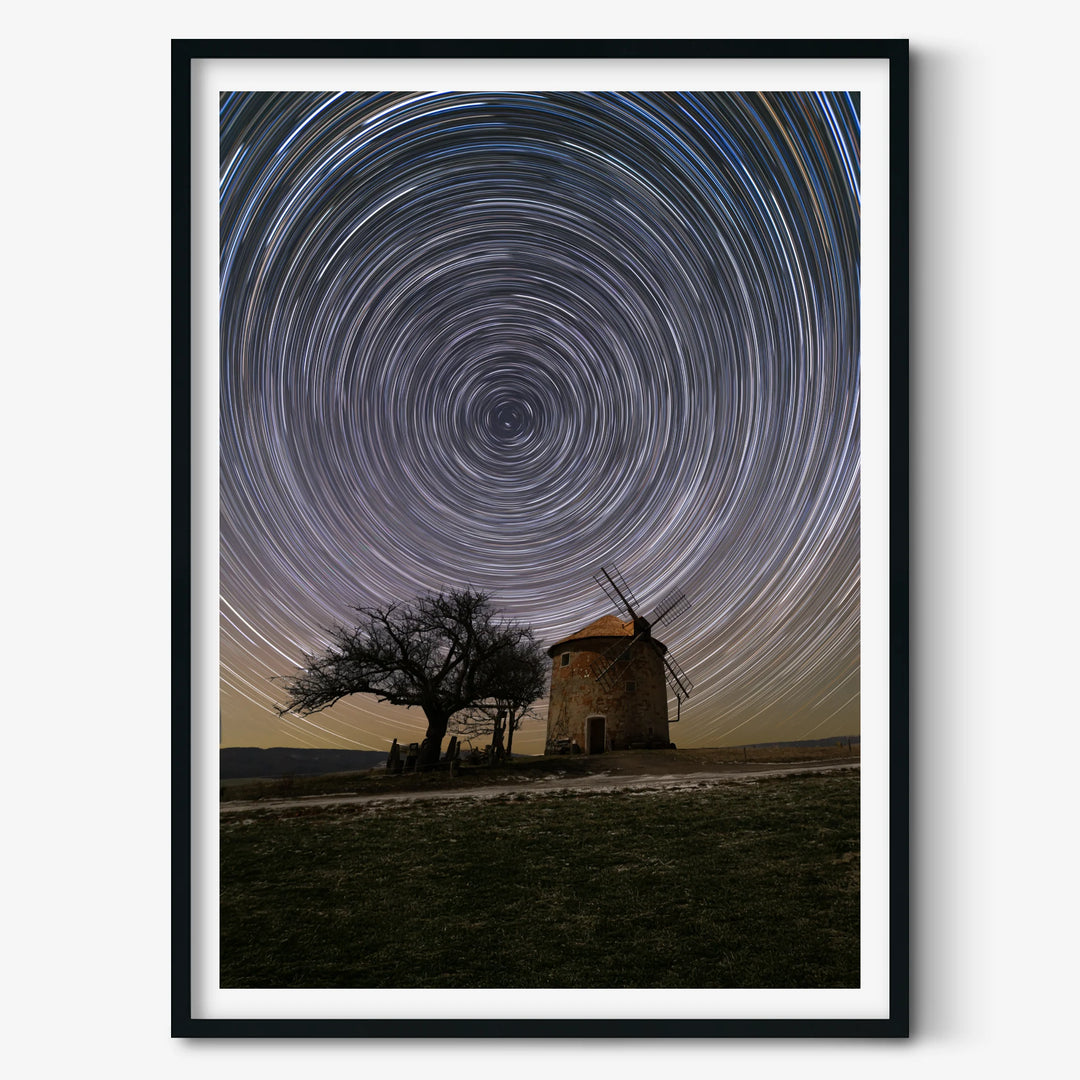
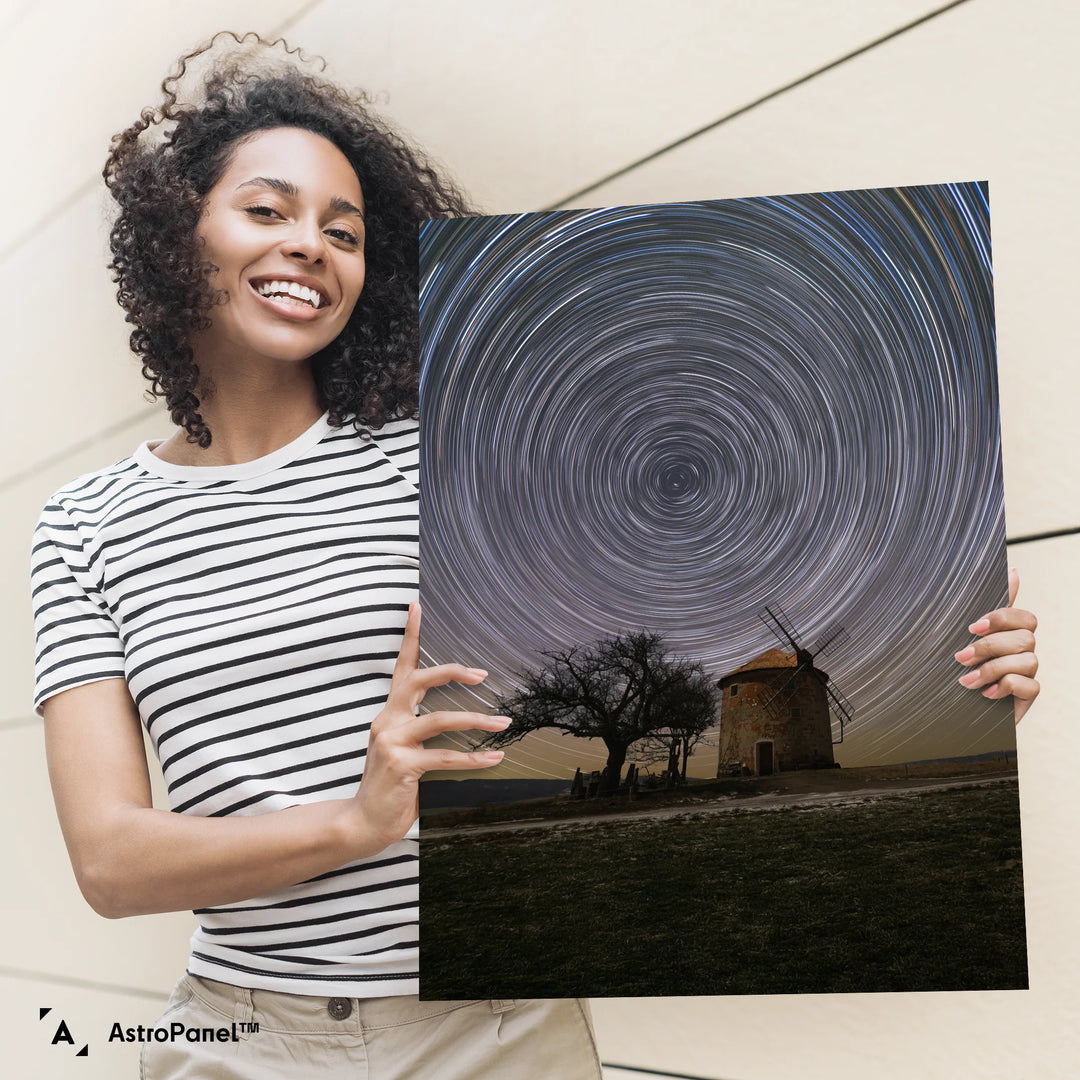
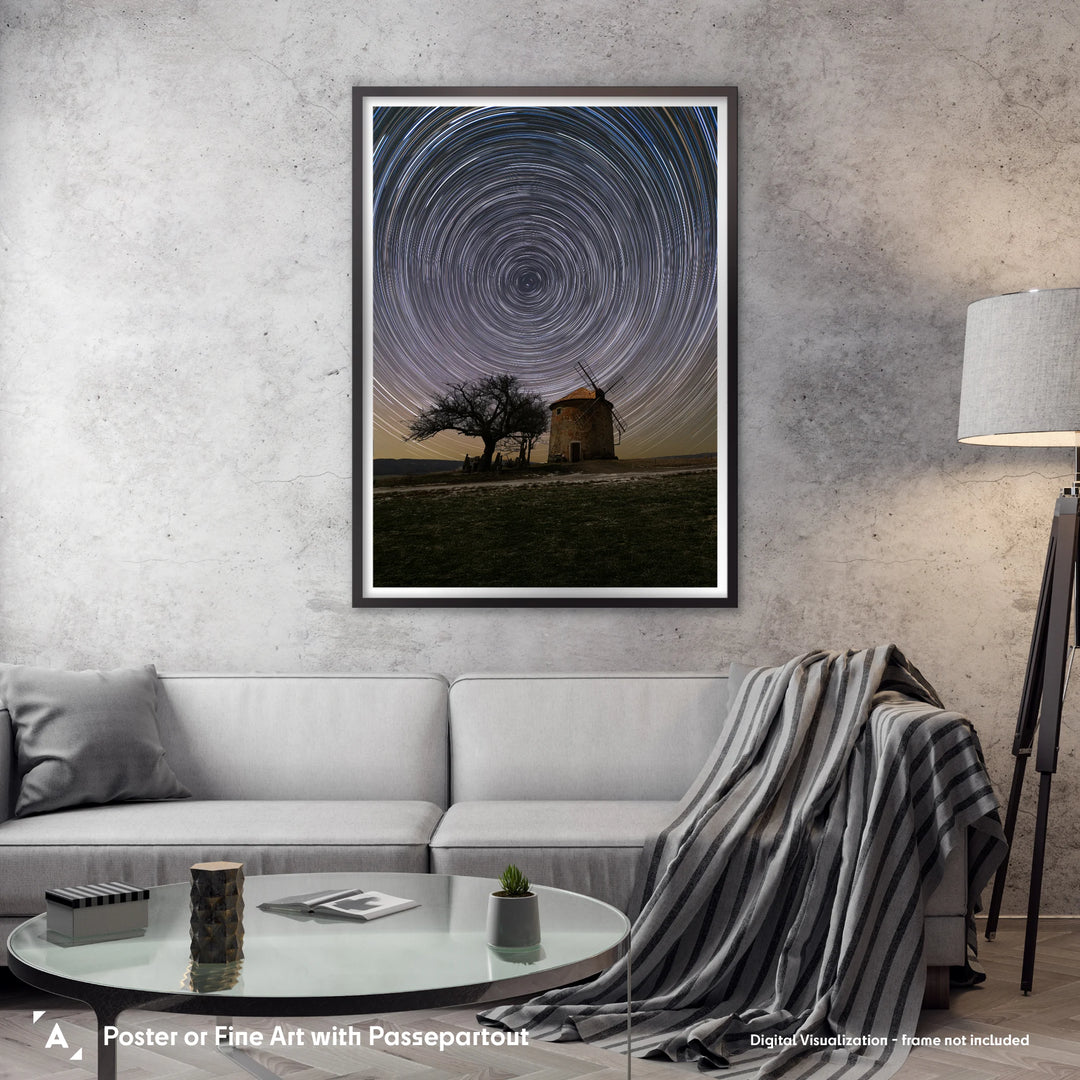
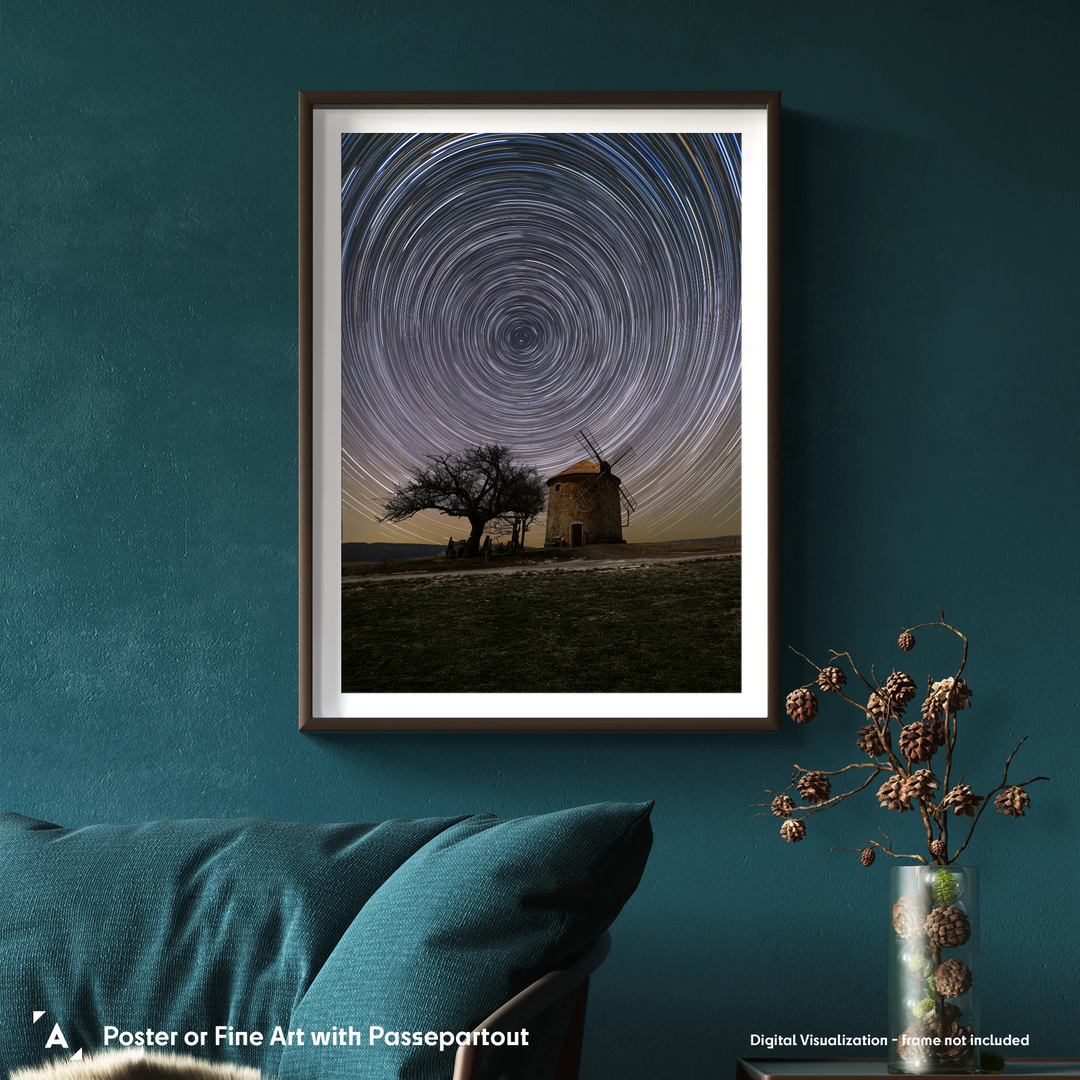
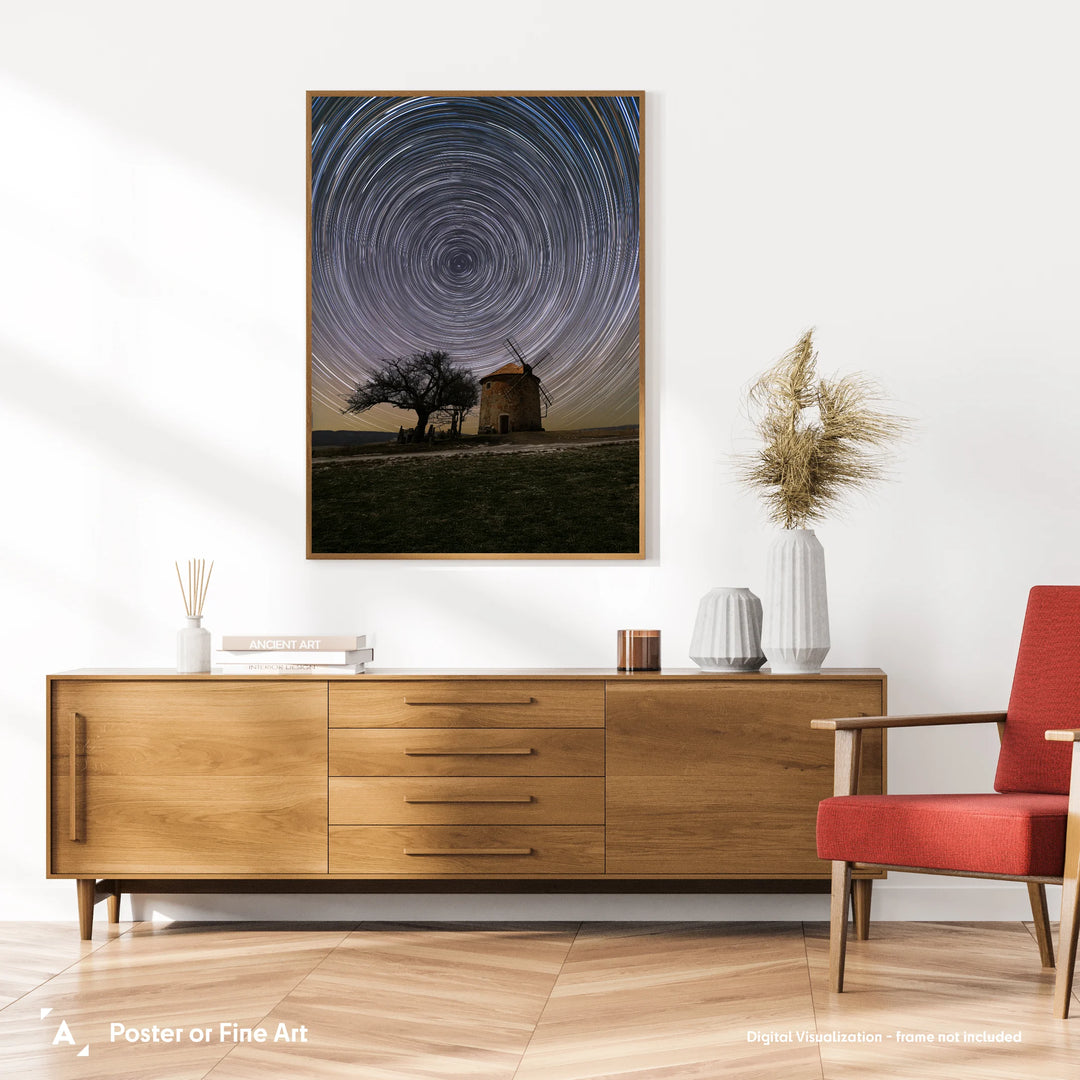
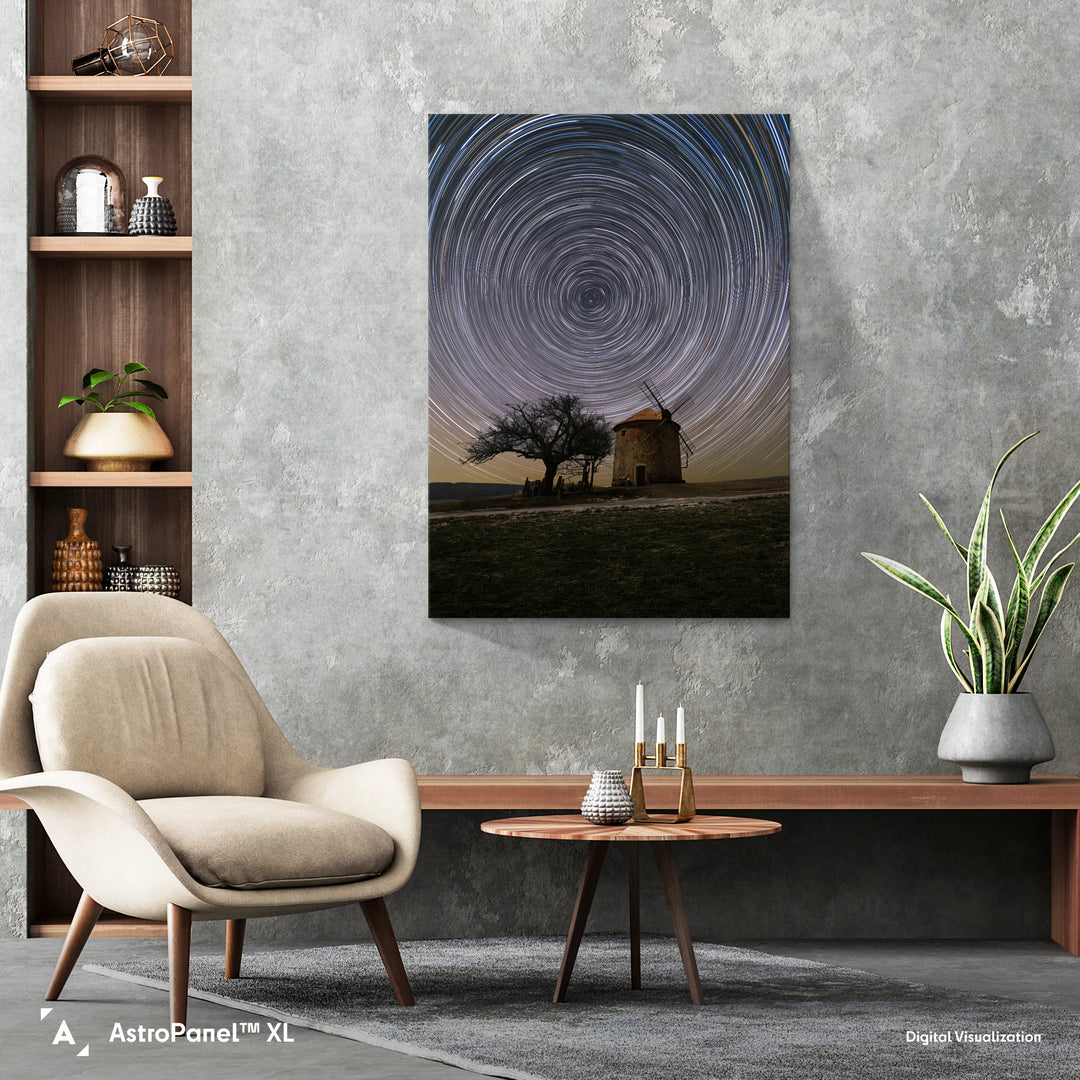
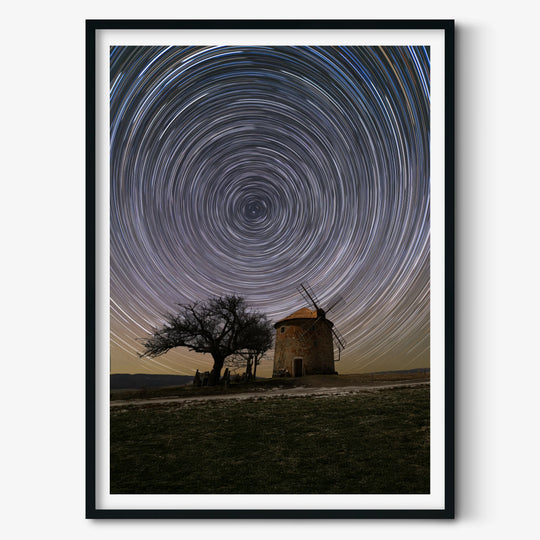
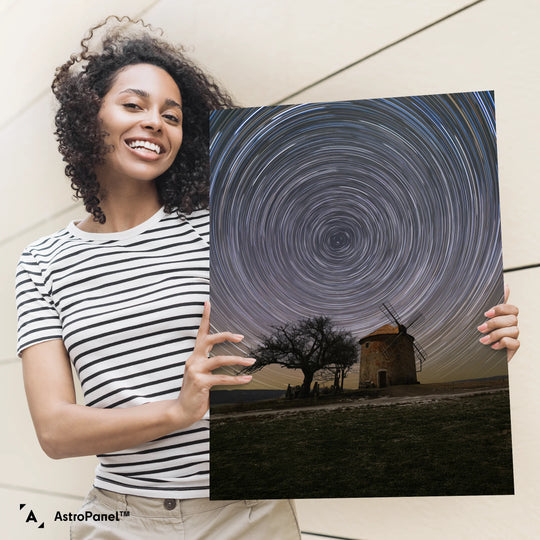
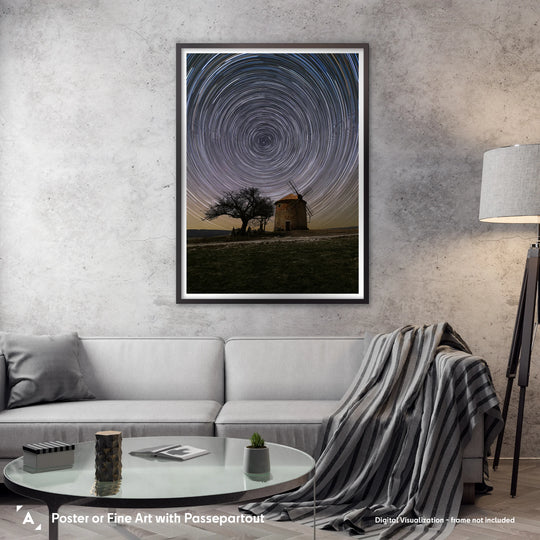
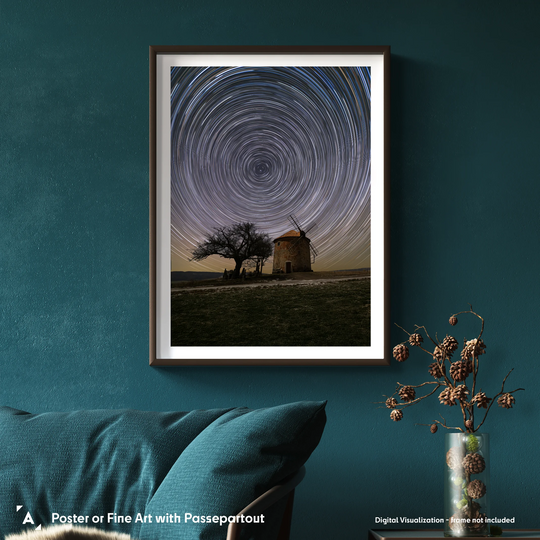
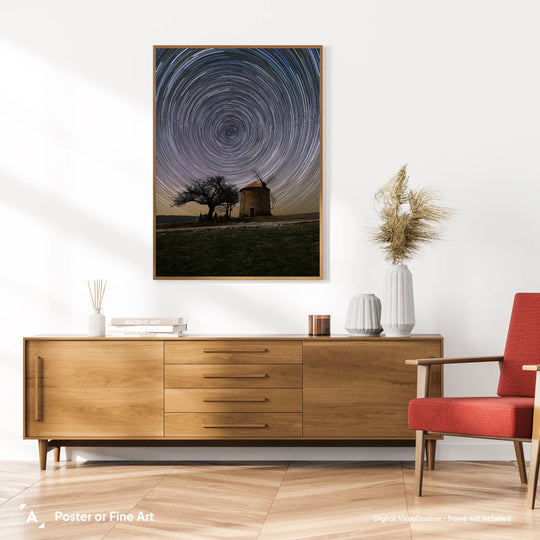
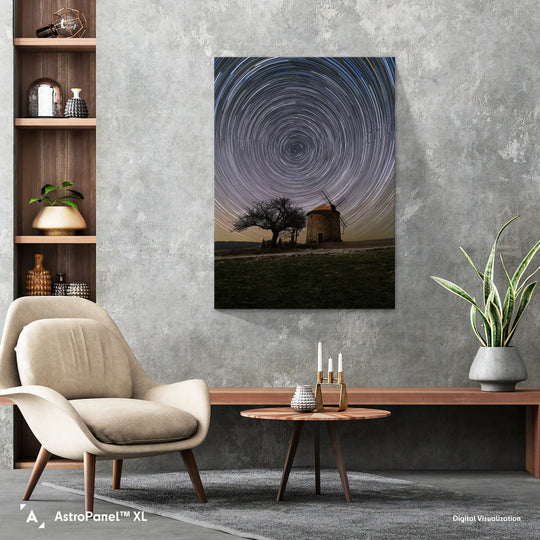



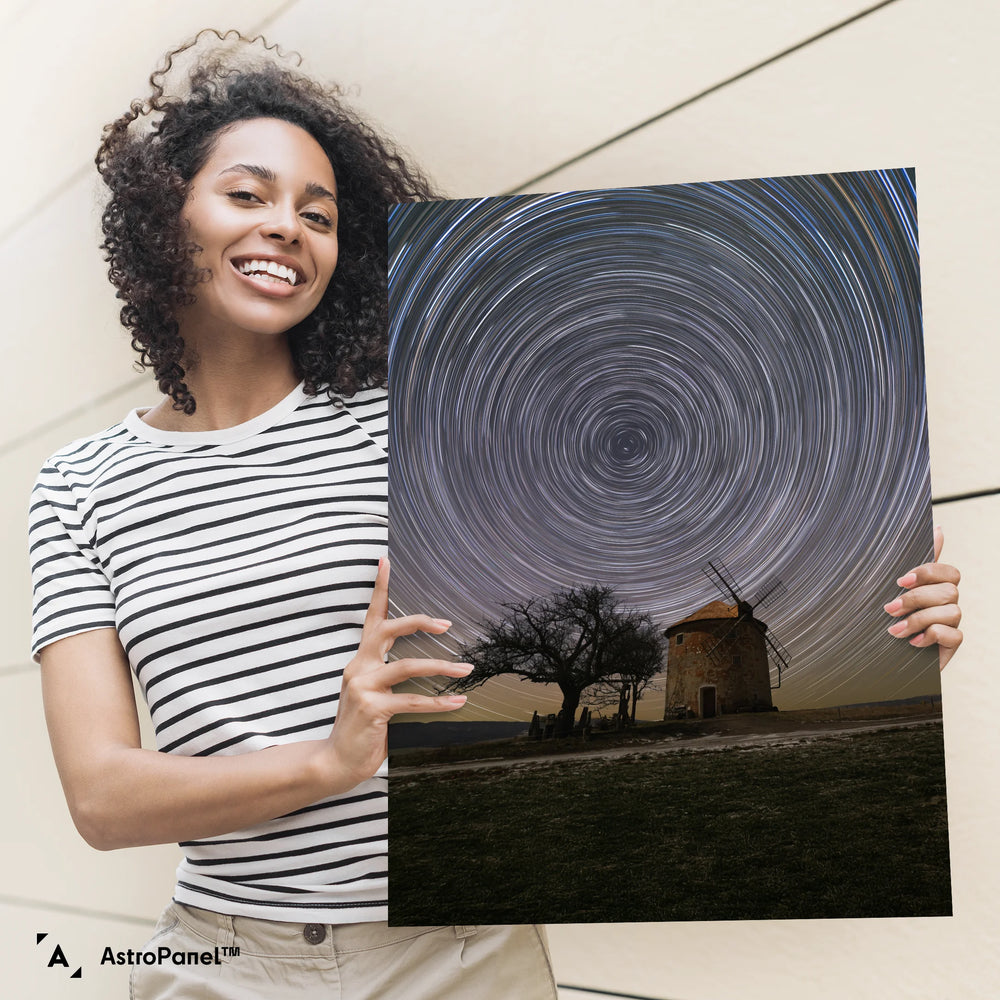
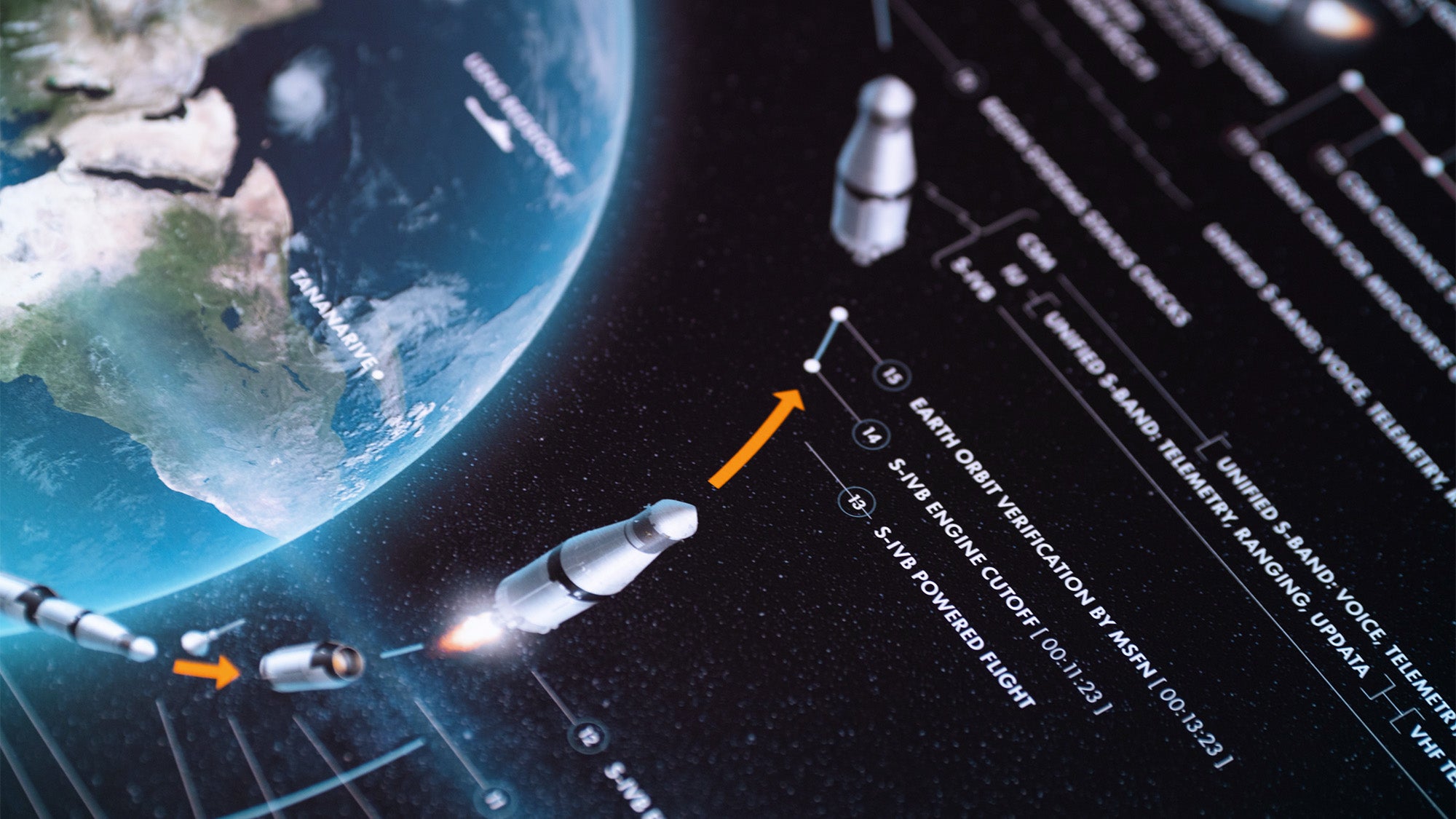
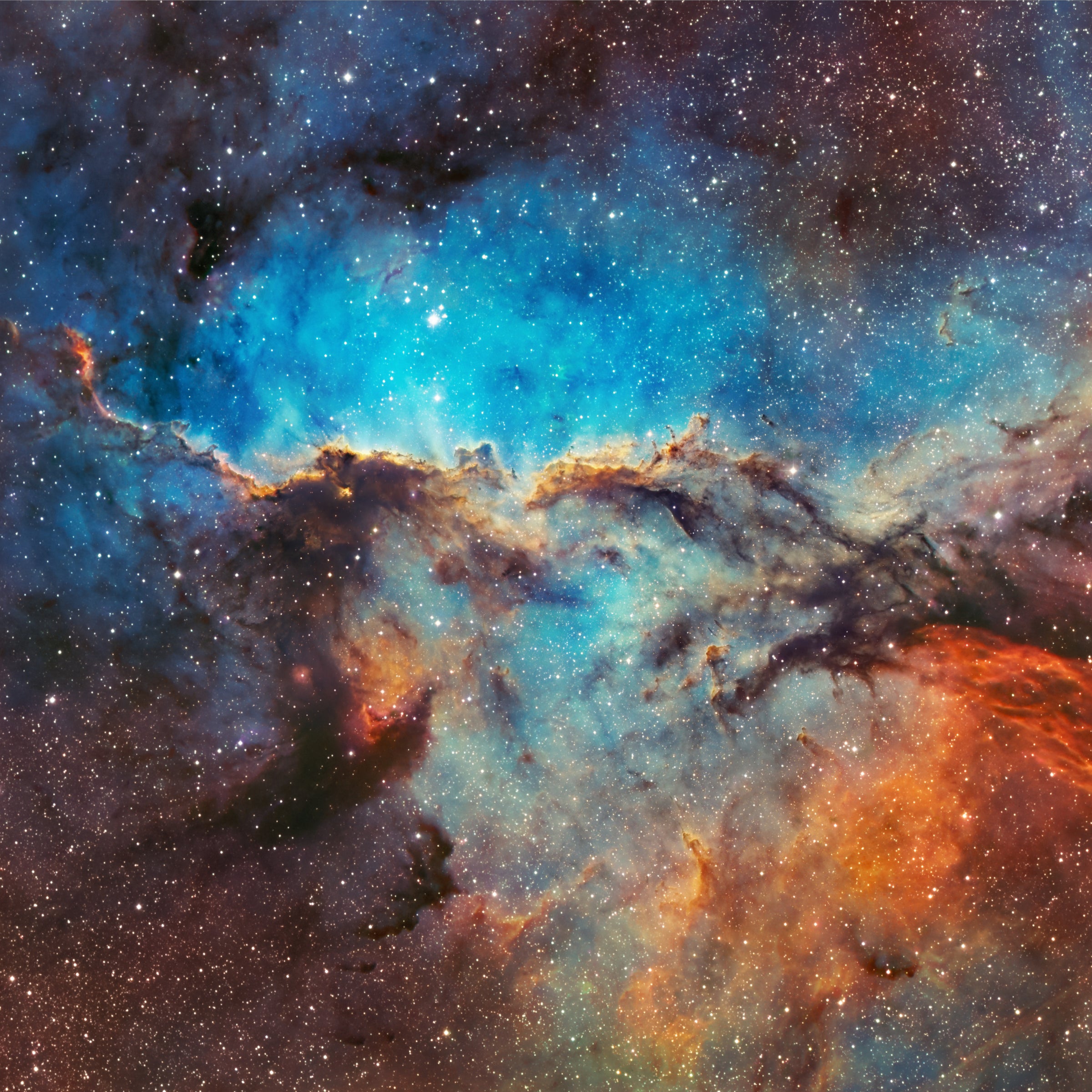
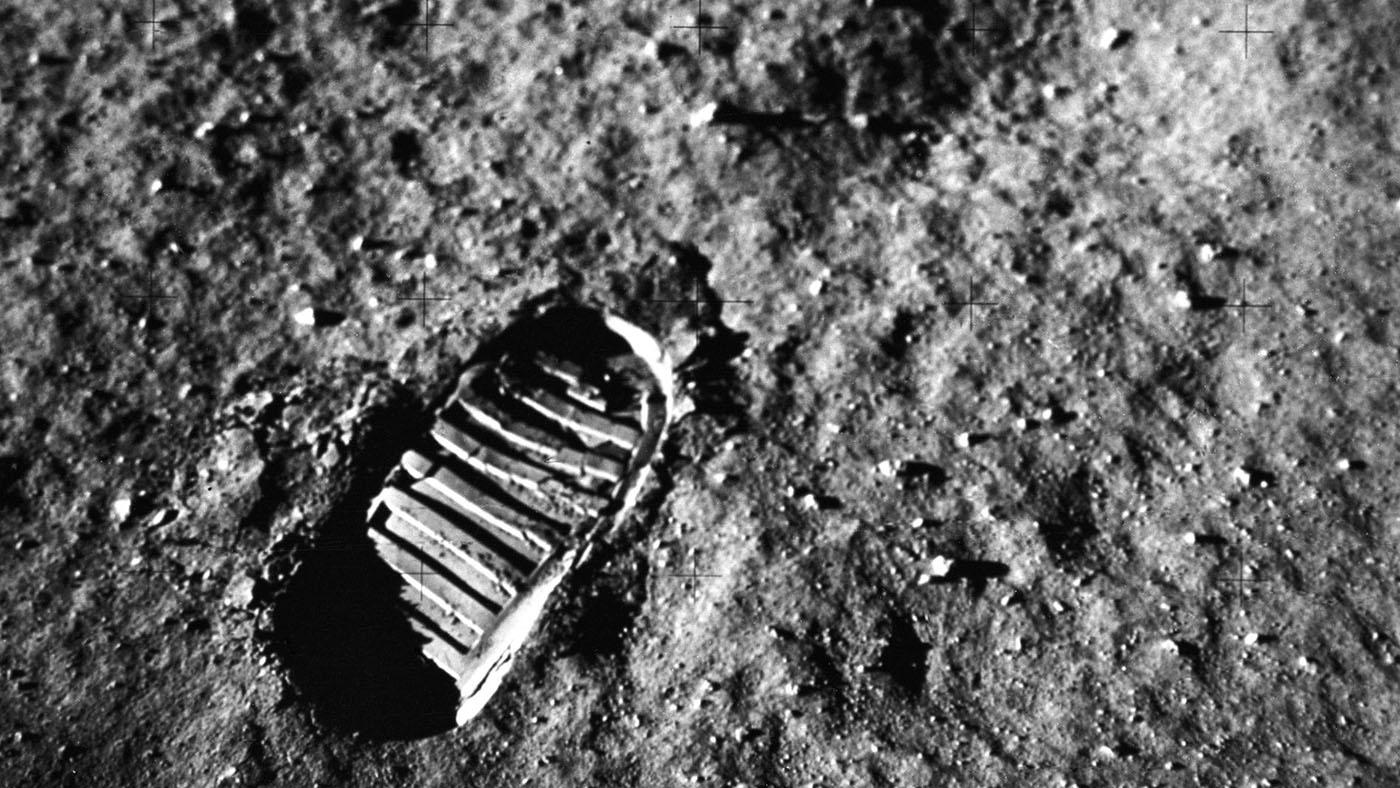
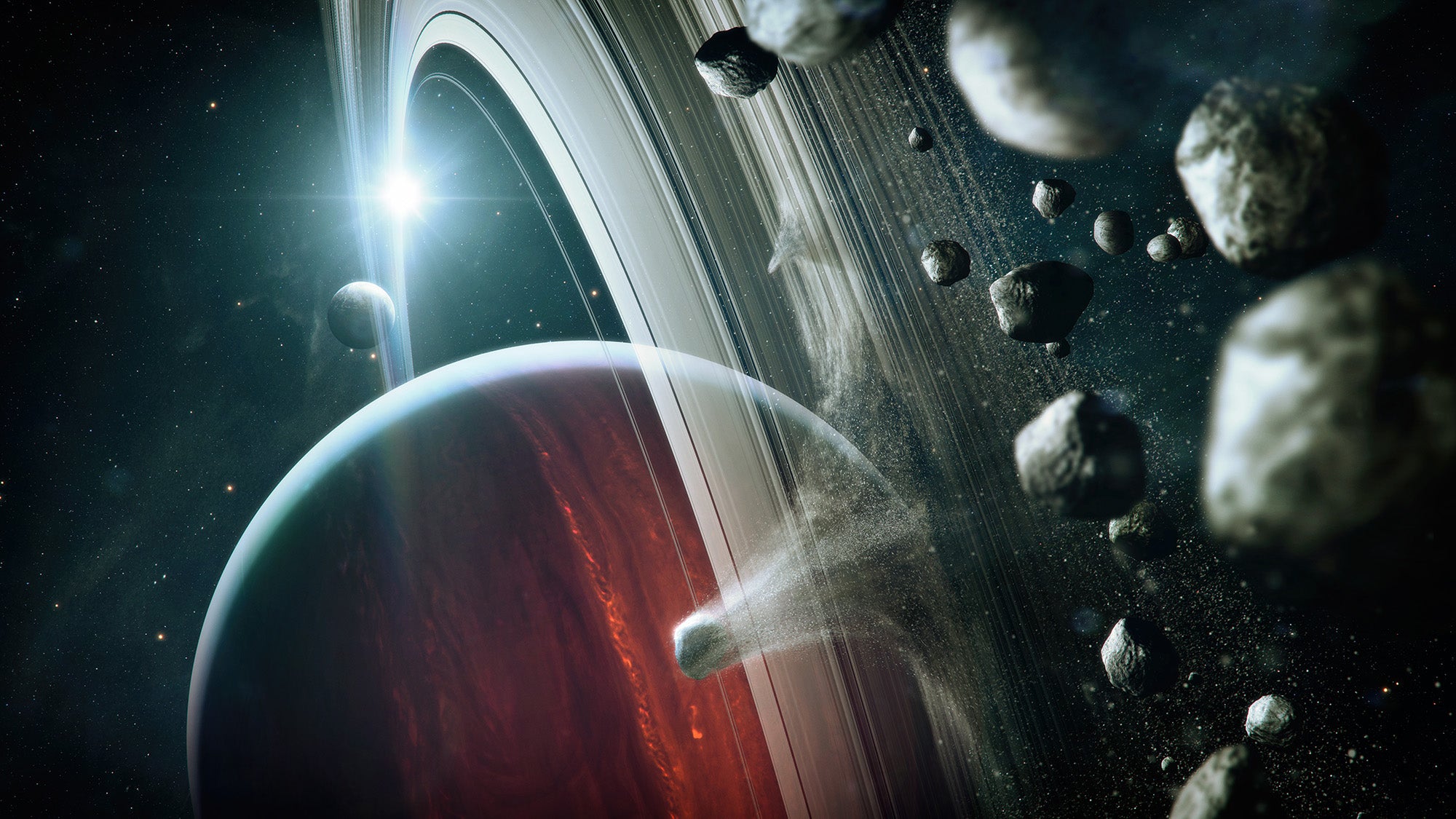
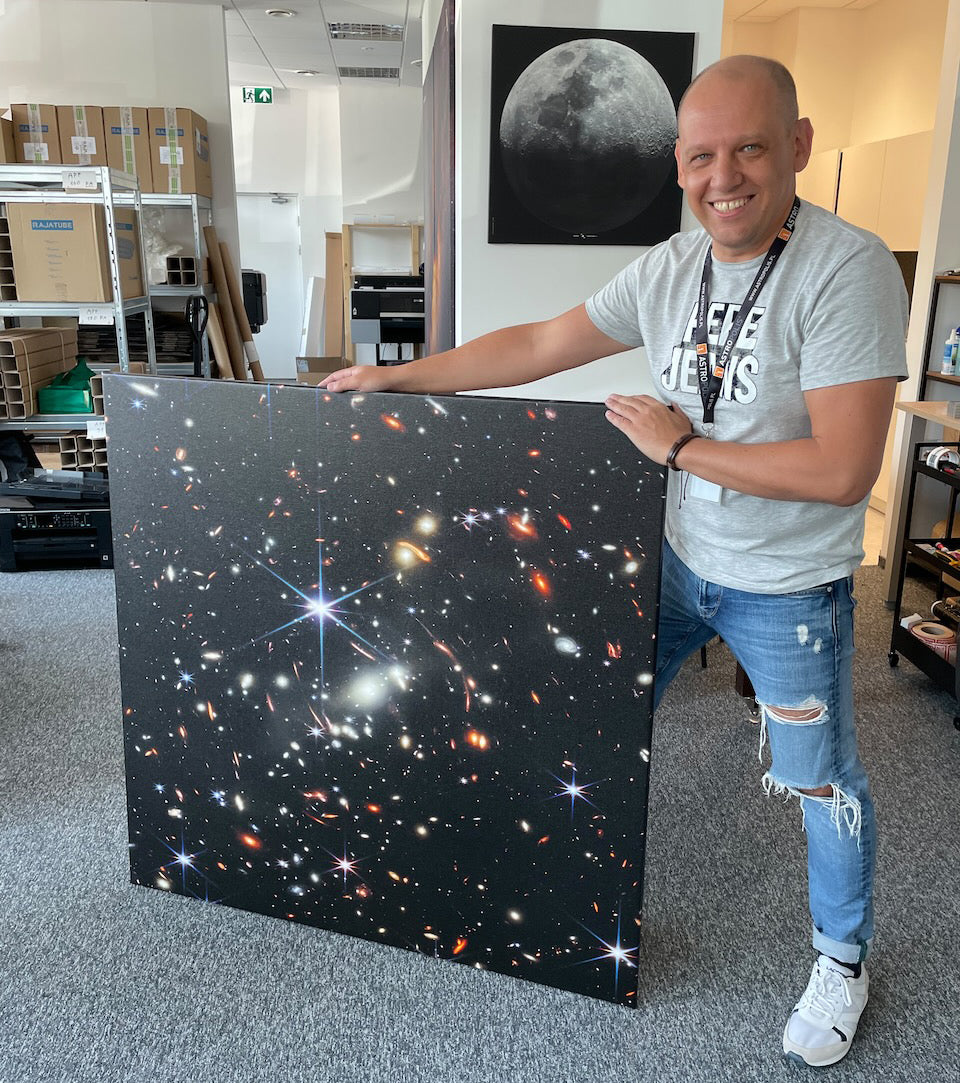
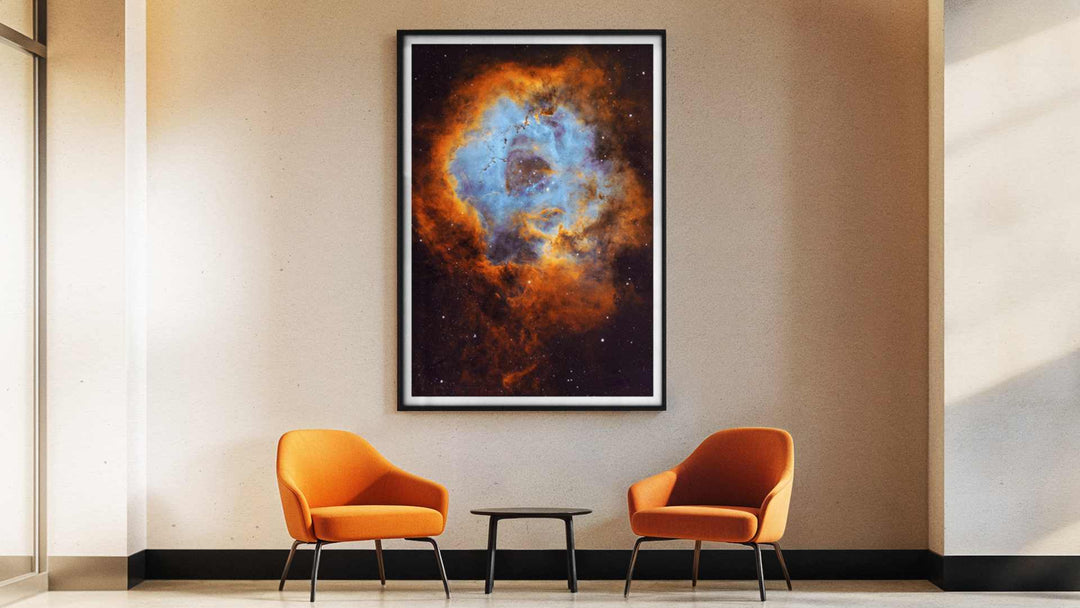
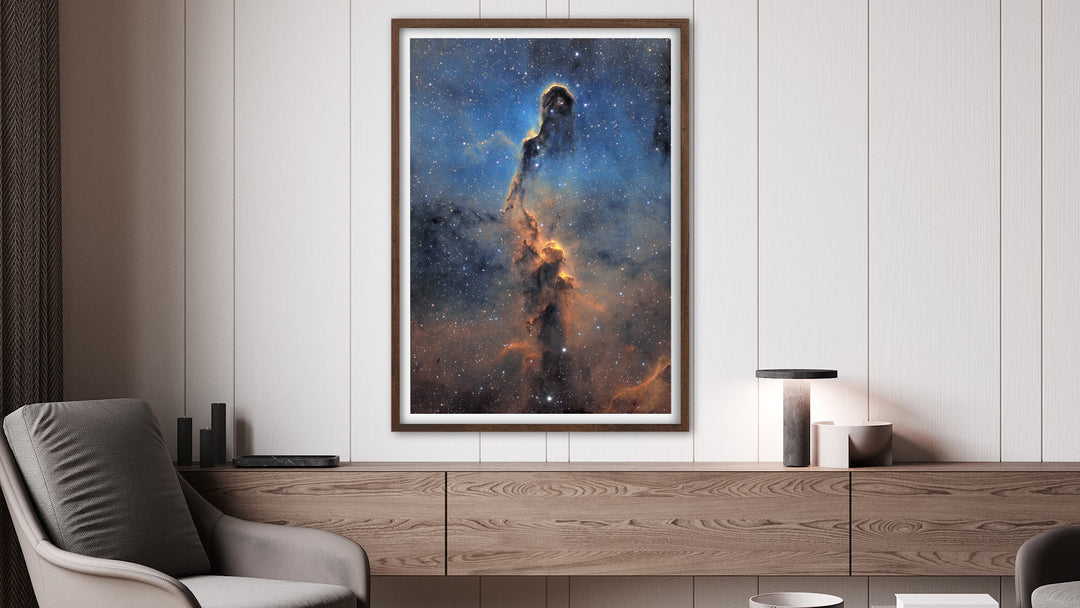
![How Space Wall Art for Home Office Creates the Ultimate Productive Workspace [Guide + Ideas]](http://astrography.com/cdn/shop/articles/wall-art-for-home-office_crab-nebula_2db40c31-05c1-437d-9089-50bb01872341.jpg?v=1755705042&width=1080)